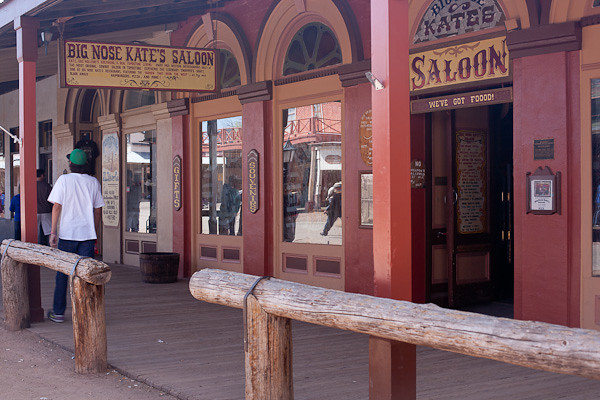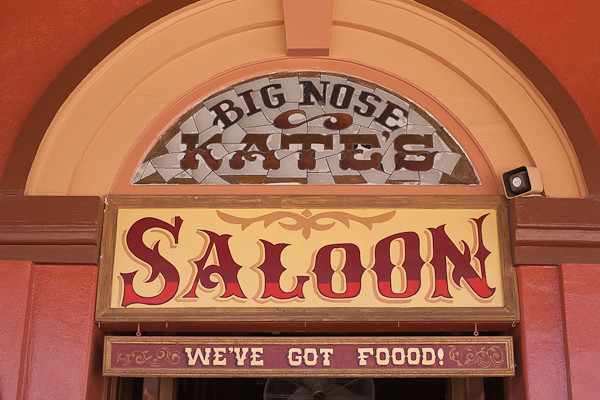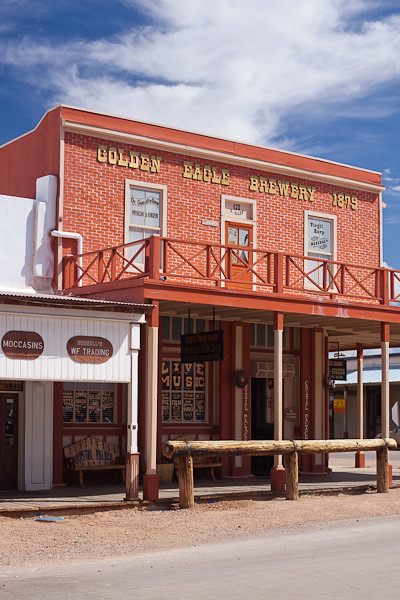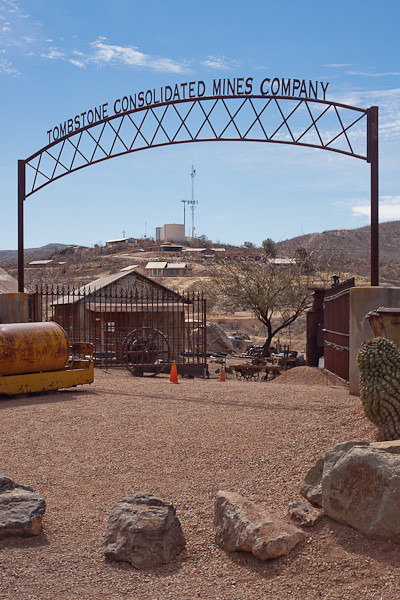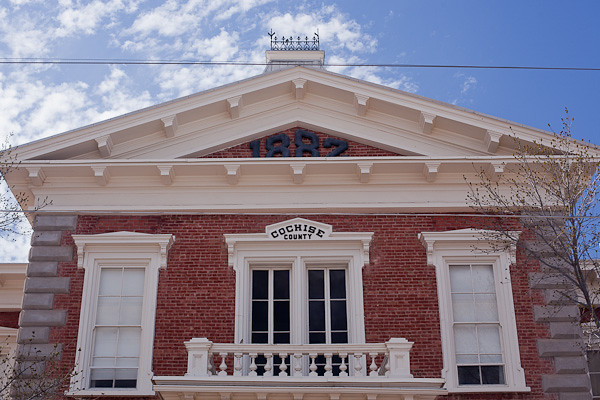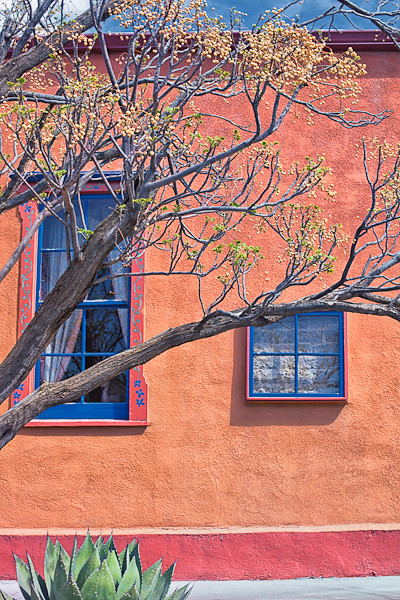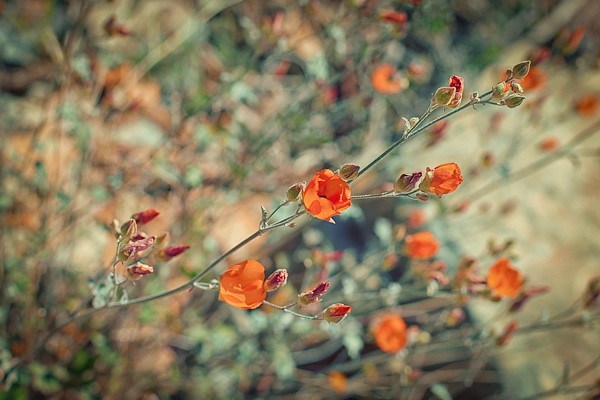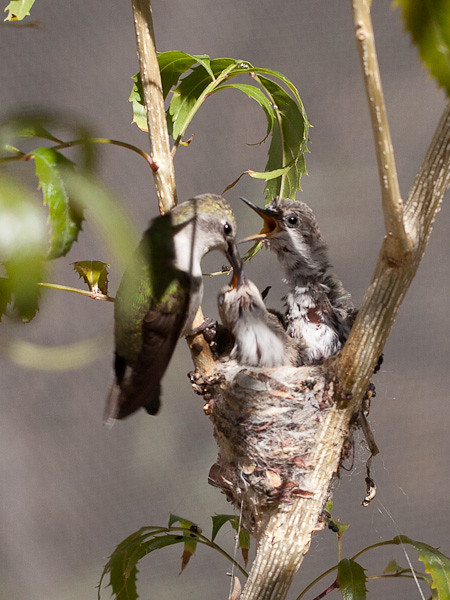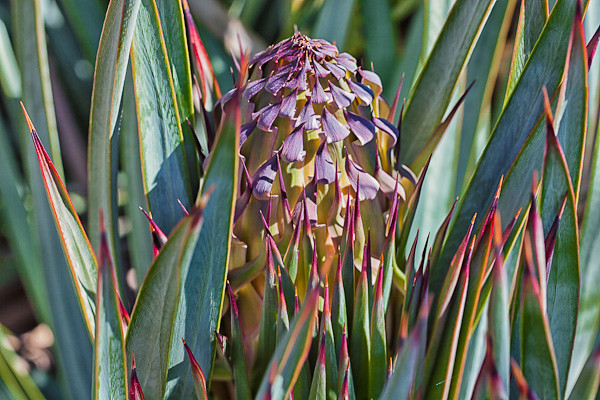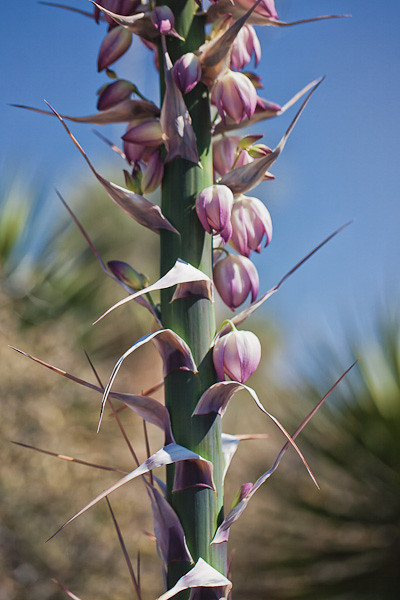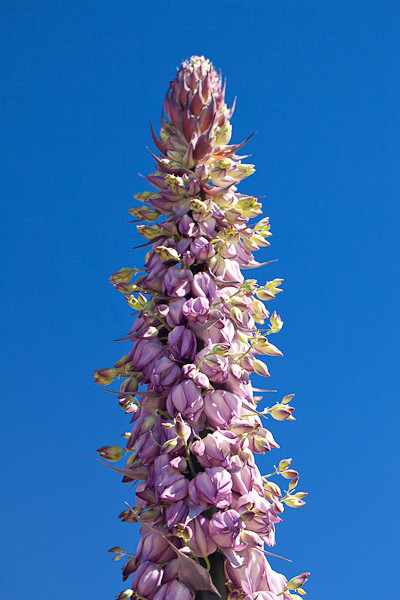Tombstone, Arizona was a rough silver-mining town made famous by the O.K. Corral gunfight involving the famed cowboy family, The Earps. Today, you can still hear gunfire in the streets, but it is only from re-enactments staged at a variety of locations. Tombstone is proud of its Old West history, and has worked hard to maintain the National Historic Landmark District designation it received in 1961.
At one time, Tombstone had a bowling alley, four churches, an ice house, a school, two banks, three newspapers, and an ice cream parlor. Of course, this was the Wild West and Tombstone also claimed 110 saloons and 14 gambling halls. Must have been a wild place in the strongest sense of the word.
You’ve got to love any saloon named for a big nosed proprietor. In this case, Big Nose Kate takes the honors. Today the saloons serve more food than drink, but it was busy with tourists on the Sunday afternoon I walked through town.
Originally known as the Golden Eagle Brewing Company, this was one of Tombstone’s first saloons, occupying a small lot. The brewery was in another structure at the rear of this restored building. There was a devastating fire at the brewery in 1883 and the building was quickly rebuilt and re-named the Crystal Palace Saloon.
Tombstone was one of the last wide open frontier boom towns in the United States, the epitome of the American wild west legend. Silver was discovered in 1877, and over the next 13 years, 85 million dollars of silver was mined in the area. It was the largest silver production operation in Arizona.
History is preserved, time stands still in the true old West at Tombstone Courthouse State Historic Park. The courthouse was built in 1882 at a cost of nearly $50,000. It was a modern and stylish building as well as the symbol of law and order in these turbulent times. It housed the offices of the sheriff, recorder, treasurer, and the board of supervisors. The jail was at the rear, under the courtroom.
Tombstone was the county seat from 1882 until 1929, when Bisbee had enough votes to move the county seat further southeast, and the county seat was moved there. The building was vacant until 1955 when the Tombstone Restoration Commission purchased the land and courthouse. The Courthouse was restored and developed development as a historical museum. No longer under the State Park auspices, it is operated jointly by the City of Tombstone and the Tombstone Chamber of Commerce.
————-
Bo Mackison is a photographer and owner of Seeded Earth Studio LLC, living and photographing in southern Arizona. She visited Tombstone a few days ago, town of Western lore, cowboys, and gunfights, and this is what she photographed.

